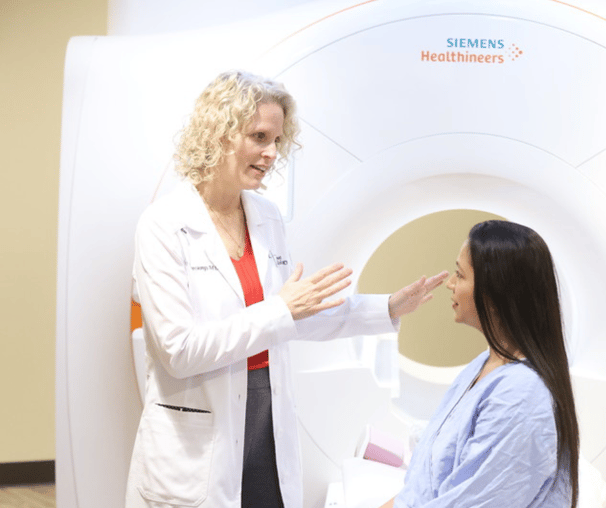
Computed tomography (CT) and magnetic resonance imaging (MRI) are frequently used by medical professionals to visualize internal body structures. Both technologies are capable of producing detailed three-dimensional images, and both play vital roles in patient care. While CT uses X-rays to create images, MRI uses a powerful magnet and radio waves. Which type of imaging a doctor chooses depends on what information they’re seeking, how soon they need it, and the patient’s personal medical history. Below are a few considerations doctors take into account when deciding which to use.
Is it an emergency?
Because it can be performed more quickly than MRI, CT is the preferred method when time is of the essence. It’s often used, for example, to check for internal bleeding and organ damage after accidents. It can also help doctors quickly assess the condition of the brain following a stroke or trauma to the head.
Would an MRI be difficult to complete?
The longer scanning required to obtain MRI images presents an additional obstacle for many patients. To produce quality images, it’s important for a patient to hold very still during the procedure. Depending on the images needed, the patient may need to hold their breath for up to 30 seconds at a time. If a patient is unable to comply with these requests, a successful MRI will be very difficult. CT is less sensitive to movement and so may be chosen in these cases.
Additionally, patients who experience claustrophobia or severe anxiety in closed spaces sometimes find it challenging to complete MRI exams. CT may provide a reasonable alternative that will be easier for these patients to endure. However, wide-bore MRI, which features an opening that’s both wider and shorter than traditional MRI machines, could also be a practical alternative. The wide-bore machines are also quieter, and in most cases, they allow exams to be performed feet first.
Is MRI contraindicated for the patient?
Because MRI relies on a powerful magnet to create medical images, it can pose a great risk to certain patients who carry ferromagnetic metals in their bodies. These metals could be in the form of shrapnel left behind after an accident or implanted medical devices. Various medical devices have their own set of guidelines in reference to MRI. Consequently, it’s important for patients to report any implanted devices or embedded metals to their doctors and imaging providers so all appropriate safeguards can be followed.
What does the doctor need to visualize?
CT and MRI have different imaging strengths. For example, while MRI produces more detailed images overall and does a better job at differentiating among different types of soft tissue, CT is the superior choice for getting a look at bone, blood vessels, and soft tissue all at once. While there is plenty of overlap in how CT and MRI are used, below are some of the most common uses of each.
CT
- Diagnosing vascular disease, such as embolism or aneurysm
- Examining multiple types of tissue or identifying tumors in the chest, abdomen, or pelvis
- Imaging skeletal structures
MRI
- Imaging abdominal and pelvic organs
- Assessing the brain, head, and spinal cord
- Examining injuries to the tendons or ligaments
Is iodine or gadolinium contrast contraindicated?
Often, CT and MRI exams use contrast dye to make the images clearer and help ensure that radiologists will be able to obtain the information the exam is seeking. Certain patients may need to avoid certain types of contrast, however. The most common contrast agents used in CT exams contain iodine, and those used for MRI are gadolinium based.
Iodine Contrast
Fewer than 1% of patients experience allergic-like reactions to iodine-containing contrast dye. Reactions range from mild to severe. Examples of mild symptoms include sneezing, nausea, itching, and hives. Severe reactions can cause irregular heartbeat, abnormal blood pressure, or difficulty breathing. Patients who have experienced severe reactions in the past should not receive iodine contrast. If you’ve had any reaction to past use of iodine contrast, make sure to let your doctor and imaging provider know.
Gadolinium Contrast
Gadolinium-based contrast produces adverse reactions less often than iodine-based contrast, making it a potentially safer choice for patients who have had problems with iodine in the past. The most common reactions are skin rashes, and severe reactions are rare. For patients with decreased kidney function, however, gadolinium contrast could trigger nephrogenic system fibrosis (NSF), a dangerous disorder that causes thickening of tissues such as the skin and organs. Depending on your medical history, your doctor may order a blood test to check for kidney disease before proceeding with an exam that uses gadolinium contrast.
Which is best for me?
Both CT and MRI and important tools for gathering information about the body and its functioning. Often, doctors have a choice of which exam to use. To help your doctor make the best decisions for your care, it’s important to fully communicate important details about your condition and medical history. Also, be sure to ask your doctor any questions and express any reservations you may have about a procedure before providing your consent. With clear communication, you and your doctor can find the best solution for your imaging needs.
At Iowa Radiology, we pride ourselves on putting patient care first. If you ever have questions about a procedure at one of our clinics, please ask. We strive to help patients access the information they need to make great healthcare decisions. For regular updates on important healthcare topics, subscribe to our blog.
Resources
Bell DJ. Iodinated contrast media. Radiopaedia.org. Published May 17, 2022. Accessed November 29, 2022. https://radiopaedia.org/articles/iodinated-contrast-media-1?lang=us
Concussion. MayoClinic.org. Published February 17, 2022. Accessed November 29, 2022. https://www.mayoclinic.org/diseases-conditions/concussion/diagnosis-treatment/drc-20355600
Granata V, Cascella M, Fusco R, et al. Immediate Adverse Reactions to Gadolinium-Based MR Contrast Media: A Retrospective Analysis on 10,608 Examinations. Biomed Res. Int. 2016 https://dx.doi.org/10.1155/2016/3918292.
MRI Benefits & Risks. FDA.gov. Published December 9, 2017. Accessed November 29,. 2022. https://www.fda.gov/radiation-emitting-products/mri-magnetic-resonance-imaging/benefits-and-risks
Stroke Diagnosis. NIH.gov. Published March 24, 2022. Accessed November 29, 2022. https://www.nhlbi.nih.gov/health/stroke/diagnosis

